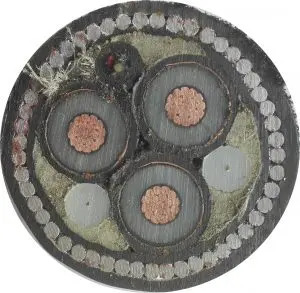Regional projects

Seawall monitoring using seismic recordings and multi-physical measurements (2020 - 2023).
The prevention of marine submersion is a key aspect of coastal management, often in heavily urbanized areas. Extreme wave conditions on already weakened coastal defense structures can lead to catastrophic flooding, such as during the Xynthia storm in 2010. To date, tools for diagnosing coastal defenses are mainly limited to visual inspections, which can sometimes be insufficient for detecting internal erosion, or to point geotechnical surveys. The SeeWall project aims to install an extensive network of sensors on a coastal defense structure, continuously recording the seismic noise generated by the swell. These seismic vibrations serve as an inspection tool as they propagate through the protective structures, allowing determination of their internal mechanical properties, including rigidity, through mathematical treatments. The goal is to provide a tool for monitoring the evolution of coastal defenses over time, to better understand their behavior, and ultimately to support diagnosis. The simultaneous recording of seismic vibrations, fiber optic temperature, and differential settling will provide additional information on the behavior of the coastal defenses and strengthen the diagnosis.


Non-destructive evaluation of mechanical waves in cables: numerical and experimental approaches (2016 - 2020).
The use of guided mechanical waves holds a strong potential for non-destructive evaluation (NDE) of cables as they are capable of propagating over long distances and are sensitive to small defects. Due to the multimodal and dispersive nature of guided waves, high-frequency and realistic propagation models are essential for sizing NDE techniques and evaluating their in-situ feasibility. For Renewable Marine Energy (RME) cables, the models to be developed must be capable of taking into account several difficulties: strong heterogeneity of the section (multi-strands), constituent contacts, helical geometry, pre-stresses, etc. Scientific Breakthroughs and Innovation: - Development of modeling and numerical resolution approaches for the propagation of guided mechanical waves in RME cables - Experimental validation of models - Sizing of instrumentation to evaluate the feasibility of mechanical waves for NDE of cables (for armor of umbilicals in particular). Expected Technical and Economic Impact: - Progress in the knowledge and physical analysis of wave phenomena in RME cables - Application perspectives: development of reliable and low-cost in-situ techniques for non-destructive testing and monitoring of the mechanical integrity of cables.

Scientific group on Non destructive control in the Pays de la Loire region.
This project aims to create a structured framework for the activities related to Non Destructive Evaluation and Testing (NDE/NDT) in the Pays de la Loire region, to improve the existing academic collaborations, and to promote this activity at regional level. It further attempts to create a collaborative framework to address R&D and NDE/NDT needs in the industrial domain at a regional and national scale to favor durable technological transfers in the region.